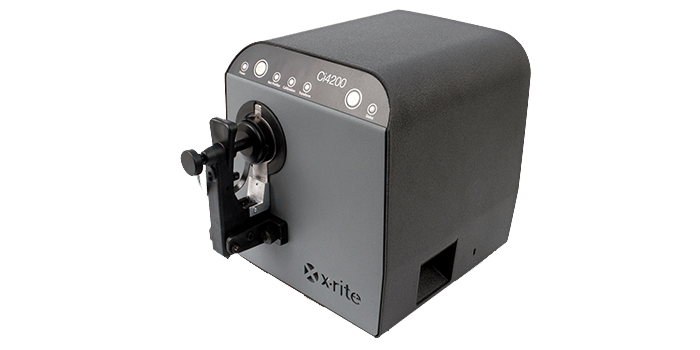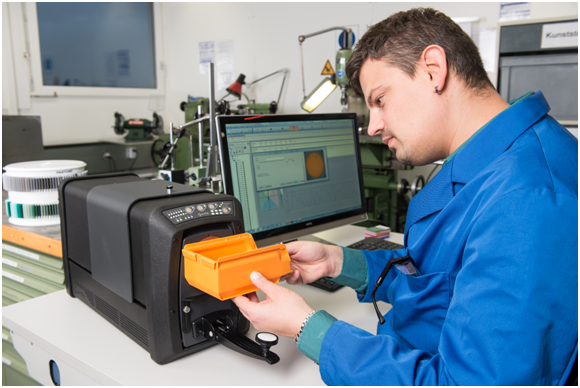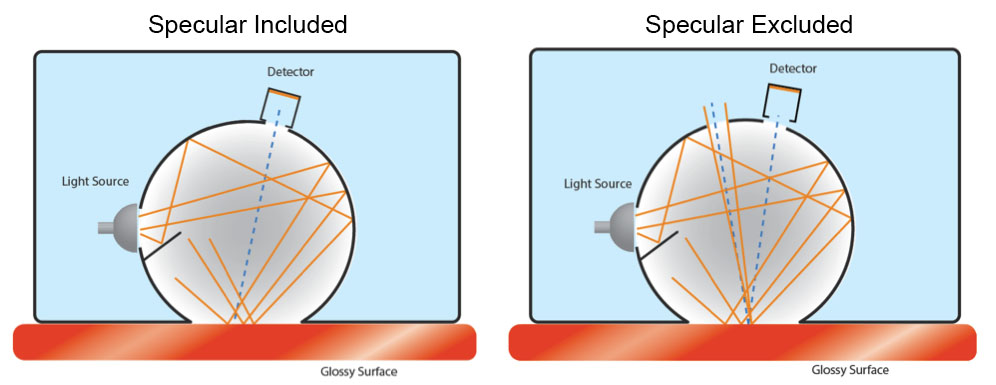No matter what you’re manufacturing, taking spectral measurements will help ensure your color remains accurate and consistent throughout your production run. When choosing the best spectro for your needs, your first consideration should be the type of surface you’ll be measuring.
Measuring reflective surfaces poses a challenge because the effect of gloss can actually change the color appearance of a sample. The surface reflection of light is what causes the gloss effect. Since a 0°/45° spectrophotometer doesn’t include gloss in the measurement, it can’t provide a true representation of how the human eye will perceive the color.
So how can you measure reflective or shiny surfaces? Today we’ll take a closer look at how to use an 8° diffuse sphere instrument to measure both spectral included (SPIN) and spectral excluded (SPEX).
In a 0°/45° instrument, the illumination of the sample is from 0° (90° from the sample surface). This means that the specular or gloss angle – the angle at which the light is directly reflected – is also 0°. The fiber optics are located at 45° from the specular angle, so they can’t pick up the gloss.
A sphere instrument works differently. The wall is a highly reflective white surface, and the light source is located on the rear of the sphere wall. A baffle prevents it from directly illuminating the sample, which provides diffuse illumination. The sample and gloss angle are both viewed at 8° from perpendicular, so this is where the specular port is located. The reference beam port monitors the sphere wall to account for changes in illumination.

This diagram shows the difference in illumination angle between the 0°/45° and 8° diffuse sphere instruments.
Spherical spectrophotometers can provide reflectance measurements in two ways: specular included (SPIN) and specular excluded (SPEX). To include gloss in the measurement, the specular port closes. To exclude gloss, the specular port opens to let the specular component escape so it’s not included in the measurement.
However, if you measure the same glossy sample with a 0°/45° and a sphere instrument reading specular excluded, the specular data won’t be the same. That’s because the 0°/45° truly excludes all of the gloss, while the specular port in a sphere doesn’t always allow all of the gloss to escape.
Choosing SPIN vs. SPEX
When do you measure SPIN? When do you measure SPEX? Here are some guidelines.
- Check with the customer. Some will require a SPIN tolerance, while others will require a SPEX.
- If you’re interested in the appearance of a sample, you should measure SPEX. However, if you want to detect pigmentation or compare textures of the same material, you should choose SPIN.
- The texture and/or gloss of your samples can vary greatly, especially with textiles. To truly evaluate the color without respect to gloss or texture, you need a SPIN reading.
- If you’re measuring pieces with various textures, such as plastic moldings, and want to compare the surfaces for color variation, you should measure SPIN.

This chart shows the reflectance curves of the same glossy sample measured both specular included (SPIN) and specular excluded (SPEX). Notice how the SPIN measurement has higher reflectance values. Measuring a matte surface as both SPIN and SPEX would produce nearly identical curves.
Which instrument is right for you?
X-Rite offers a variety of sphere instruments, from the Ci62 portable series to the Ci7800 benchtop. Choosing the best for your needs isn’t always easy, so let us help.
Featured Color Management Solutions
Learn more about these featured products:
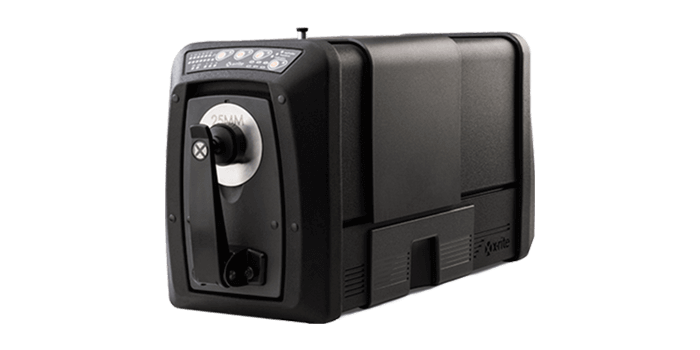
Ci7800
From inspiration through formulation, production and quality control, the Ci7800 benchtop sphere spectrophotometer is one of the most advanced instruments in the market.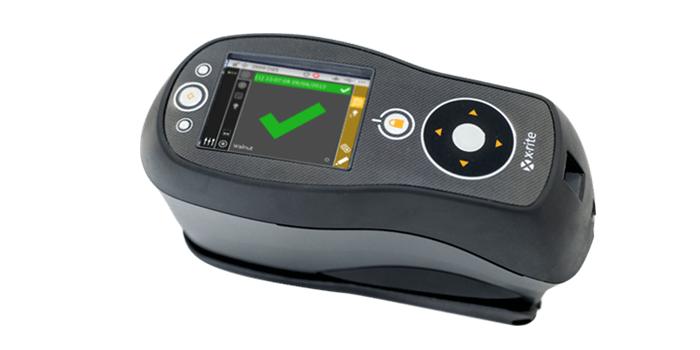
Ci64
The Ci64, X-Rite’s most precise handheld sphere spectrophotometer, is available in three models: with simultaneous SPIN/SPEX, correlated gloss, and a UV option.